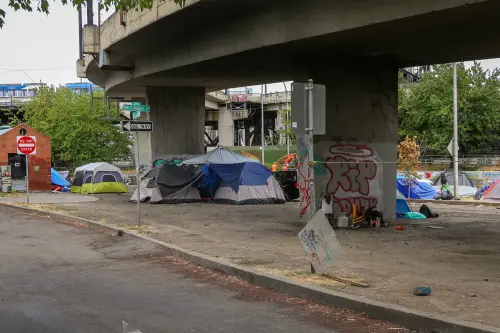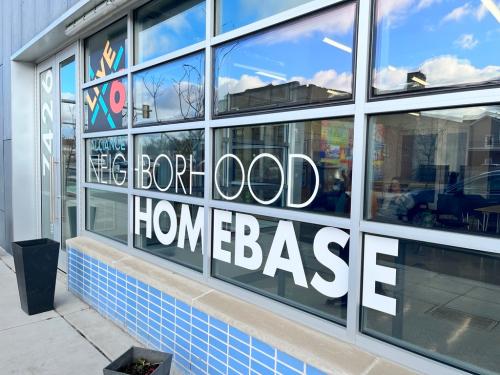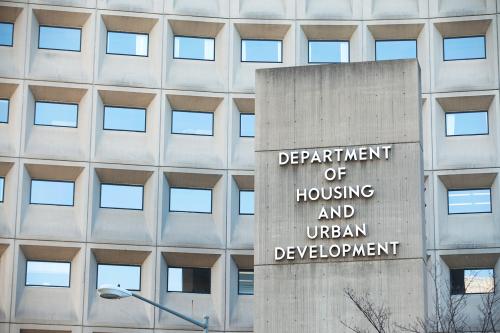For much of their history, place-based philanthropy and public policy have been defined synonymously with neighborhood-based anti-poverty efforts. Yet place-based strategies themselves take several different approaches. Some aim to improve neighborhoods, addressing localized market failures by upgrading the physical and economic environments in poor neighborhoods through regulations, tax credits, and grants for economic and affordable housing development. Others focus on delivering services to families in low-income communities to help them meet basic needs or access better local education and work opportunities. And still others seek to expand opportunity by giving low-income residents of struggling neighborhoods a wider set of options – related to housing, jobs, or education – through tools like housing vouchers, specialized transportation, or charter/magnet schools and other specialized enrollment policies.
As this monograph notes, several decades of neighborhood-focused efforts have revealed the limitations of philanthropy and public policy working primarily at that small geographic scale. Neighborhoods aren’t closed systems – people and capital flow in and out of them constantly. And their size is little match for the increasingly global forces that impact economic opportunity and prosperity.
These lessons have two implications for leaders in philanthropy and public policy. First, place-based initiatives must engage the market to make a meaningful dent in improving opportunities for low-income people. Second, doing so requires intervening at different scales, depending on the nature of the market opportunity.
These sentiments are moving into the mainstream. More funders and policymakers have begun working deliberately to connect neighborhood-focused initiatives with larger comprehensive planning efforts that operate at the wider city or regional levels. As Bart Harvey is quoted as saying in Chapter 3, such linkages enable local leaders to “…think about their neighborhood within a larger context and learn how to integrate private investments.” This approach recognizes that regions – metro areas – are the fundamental units at which our modern economy is organized. Metro areas attract and concentrate the key ingredients that enable firms, workers, and institutions to effectively produce goods and services – and ultimately jobs and wealth – that power a nation and its communities. As one leader in Northeast Ohio recently remarked, “People live in neighborhoods, not regions. We must strengthen community assets and connect them to the regional economy.
While market-focused efforts are not sufficient for reducing poverty – just witness the disconnect between recent economic growth and wages for the bottom half of the U.S. population – they are nonetheless a necessary foundation for sustainable poverty alleviation. Indeed, at all levels of geography – neighborhood, regional, national – the overall employment rate is one of the strongest predictors of poverty. Chapter 3 in fact acknowledges that “…the market economy is becoming an organizing principle for a majority of [place-based] initiatives, a central theme running through all of them regardless of the outcomes they focus on.”
The next generation of smart, place-based strategies leverages the power of markets to achieve better social and economic outcomes. These market-based strategies focus not just on producing (or attracting) any jobs, but generating good-paying jobs in durable industries and ensuring those jobs are directly accessible for workers, including families and local firms in adjacent communities. This approach contrasts starkly with conventional strategies in which consumption and housing production fueled a boom and bust or merely distributed resources and spending within a metro area with no net gain for residents and communities. The new wave of economic strategies taking shape in cities and metro areas across the nation is focusing on:
• Bolstering advanced industries and worker skills, positioning places for production in the most innovative manufacturing and services industries, and providing younger workers, no matter where they live, with the STEM skills those industries demand;
• Fostering a new geography of innovation, capitalizing on the rise in open innovation and demand for density, especially around “eds and meds” and other large employers, to restore the economies of urban core neighborhoods;
• Increasing global trade and investment, helping places take advantage of export and investment opportunities arising out of global urbanization and growth of the global middle class to generate good-paying jobs;
• Delivering transformative infrastructure, designing, financing, and delivering projects of all types (transport, trade, energy, water, telecommunications, public works) in a sector that today supports more than 14 million quality jobs and is key to connecting workers and neighborhoods to market opportunities.
In short, rather than assume a passive stance in the face of large market forces, emerging place-based initiatives are proactively working to position communities strategically amid rapid global, technological, and demographic currents. The promise is not simply more jobs, but better jobs and sustained income that directly benefit a wider segment of the population, including those living in low-income communities.
If people live in neighborhoods and markets are regional then what is the proper scale of intervention to promote economic opportunity and reduce poverty? Ensuring that lower-income places benefit from wider economic initiatives often requires strategies at different geographic scales, depending on the market opportunity in question. This is even more the case now that most low-income people in metropolitan areas live in suburbs rather than cities, where the “neighborhood” is not as meaningful a geography for organizing and delivering policy or funding.
Take, for instance, the South King County region within Greater Seattle, which, along with several suburban municipalities, share common demographic and economic challenges. They have a highly racially and ethnically diverse younger population that exhibits higher school dropout rates and lower educational achievement than the rest of the region. This ultimately acts as a barrier to their residents accessing the large numbers of STEM jobs being created elsewhere in the region, and to those communities attracting quality jobs with specialized skills demand. And the region’s global capabilities in aerospace, information technology, and other advanced manufacturing and services sectors are increasingly stressed by a lack of highly trained workers, especially in the local marketplace.
Rather than approach this issue school by school, or even district by district, the communities of South King County united under the banner of the Road Map Project. This project, with support from government and philanthropy, works across seven school districts in South King County to share resources, strategies, and data, all aimed at improving student achievement and preparing the sub-region’s young people for college and careers. By intervening at a multi-jurisdictional scale, the project is working to improve the prospects for a shared future labor pool across the county. This is especially the case given the high rates of inter-district mobility among families there.
In other cases, a neighborhood – or a collection of neighborhoods – may in fact be a logical scale at which to promote new economic opportunities. In Philadelphia, the University City area is combining its assets in teaching, research, and medicine to become a hub of innovation and entrepreneurship. As part of that effort, Drexel University’s Innovation Neighborhood project is developing 12 acres of underutilized land near 30th Street Station into a live/work/learn area. This neighborhood is adjacent to Mantua, the third most economically distressed neighborhood in Philadelphia. Backed by a federal “Promise Zone” designation for Mantua, Drexel is now working to create a new STEM-focused elementary and middle school that capitalizes on the wealth of nearby institutions, and is investing more in local public safety and retail corridors to improve opportunities and quality of life for local residents. In this instance, the market opportunity lends itself naturally to a neighborhood-focused intervention.
Truly comprehensive strategies can address the needs of lower-income places at multiple geographic scales. In the Chicago region, World Business Chicago’s Plan for Economic Growth and Jobs is advancing a series of strategies to enhance the region’s competitiveness. These include investments in priority sectors that are sources of good jobs, such as advanced manufacturing and transportation and logistics, boosting local firms’ access to global markets, and focusing workforce and higher education programs on current and projected employment demand. Another of the plan’s pillar strategies seeks to develop and deploy the assets of underserved neighborhoods in service of the overall growth plan. In that vein, economically struggling neighborhoods such as Greater Chatham on Chicago’s South Side are assessing opportunities to connect local businesses to supply chains in high-growth regional manufacturing sectors identified by the plan. Similarly, municipalities across South Cook County that face high rates of poverty and economic distress have come together through the Calumet Green Manufacturing Partnership to support manufacturing competitiveness by matching firms with trained workers. And at the city scale, Chicago realigned its under-performing city colleges to prepare young people from many low-income neighborhoods for careers in one of the key sectors identified in the plan, and engaged private industry to help design curricula and provide internships and apprenticeships. Chicago is also poised to launch a new 16-mile Bus Rapid Transit line that will connect households along the line – 25 percent of which do not have a car – to two emerging industrial corridors, major job centers like the Illinois Medical District, and more than 100 educational institutions.
Place-based initiatives cannot, and should not, rely on the market alone to alleviate poverty in place. Complementary strategies to raise wages and benefits, or secure public health and safety, are equally critical. Ultimately, however, initiatives must engage with the market economy, which can provide a platform for sustainable poverty reduction. As funders and policymakers conceive place-based initiatives, they should also design their geographic target communities to match the market opportunities they believe are most promising for helping low-income residents.
This essay is from a forthcoming volume published by the USC Center on Philanthropy and Public Policy, and was prepared for the Prioritizing Place conference on Dec 4-5, 2014.



Commentary
Matching Place-Based Strategies to the Scale of the Market
January 21, 2015